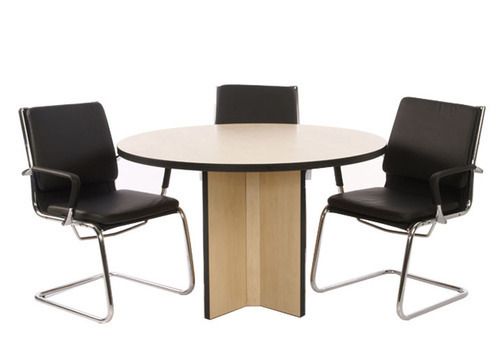A few days ago we attended an interesting day of presentation of the new solutions to improve the well-being and internal communication of the company through office furniture. The speaker, one of the manufacturers of our furniture solutions, made a fantastic presentation of his new round tables for meetings telling us the interesting story of this furniture considered a classic of the work environment. The talk seemed so fascinating that today we want to share it here with you; so today in the Spandan blog we are going to tell you a story, the story with a happy ending of the round tables.
The round table of the arthuric legend
Do you remember the knights of the round table of the legends of King Arthur? When Arthur was crowned as King of Camelot, he decided that he would discuss all the important issues of his kingdom with the brave warriors who had helped him get his crown. Thus, he commissioned the cabinetmaker of the Court to create a table as it had not been seen before: a large, completely circular board in which all the attendees would sit at the same level , without headboard or prominent position that marked ranks, hierarchies or powers. The intelligent Arturo, in addition, always arrived last to the meeting, so that the gentlemen who were arriving sat at the site they decided without knowing where their leader would be placed.
In the Kingdom of Camelot the legend had created not only a table, but a whole concept of command style and participation that has remained intact centuries and centuries later and, in addition, in the real world: the meeting table in which all opinions are valid regardless of the hierarchical power of each meeting attendee.
From the legend of the round tables to reality
The famous round table of King Arthur became a reality in 1223 in Beirut to celebrate the rise to the rank of knights of the eldest sons of a powerful aristocrat. That was the beginning of what would become a prevailing fashion in the European Courts of the High Middle Ages. There is written evidence that between the thirteenth and fourteenth centuries round tables were established in France, in Spain and, finally and curiously, in England. The round tables thus became an essential part of the internal communication of cities and states.
From reality to the business environment
- Minimize or eliminate hierarchies. At the circular meeting tables, all meeting attendees occupy a similar spatial plane. By eliminating the header positions, the participant feels freer to contribute their opinions or assessments, so that, at least theoretically, communication becomes richer and more effective, especially when it comes to resolving conflicts or problems.
- Promotes communication between management and staff. In large corporations there are few opportunities for the leader of a team to listen quietly to the opinions of his valuable team. Round tables facilitate this communicative process as they eliminate the typical visual barriers of square tables.
- Dynamize the meeting. From the point of view of communication psychology, circles bring dynamism and liveliness to conversations. Attendees, without barriers or hierarchies, are providing solutions, ideas and opinions at a faster pace than if they were placed following the straight lines typical of desks or rectangular tables.
- It brings a plus of modernity and design to offices and offices. Despite its long history, the harmonious and fluid lines of the round tables continue to inspire feelings of design, modernity and break with the rigid norms of the more traditional corporations. A plus of modernity that favors the corporate image that the company wishes to project in its visitors and, also, the valuable internal communication without barriers of modern, innovative and productive offices.
Quick Guide to Choose Office Furniture
